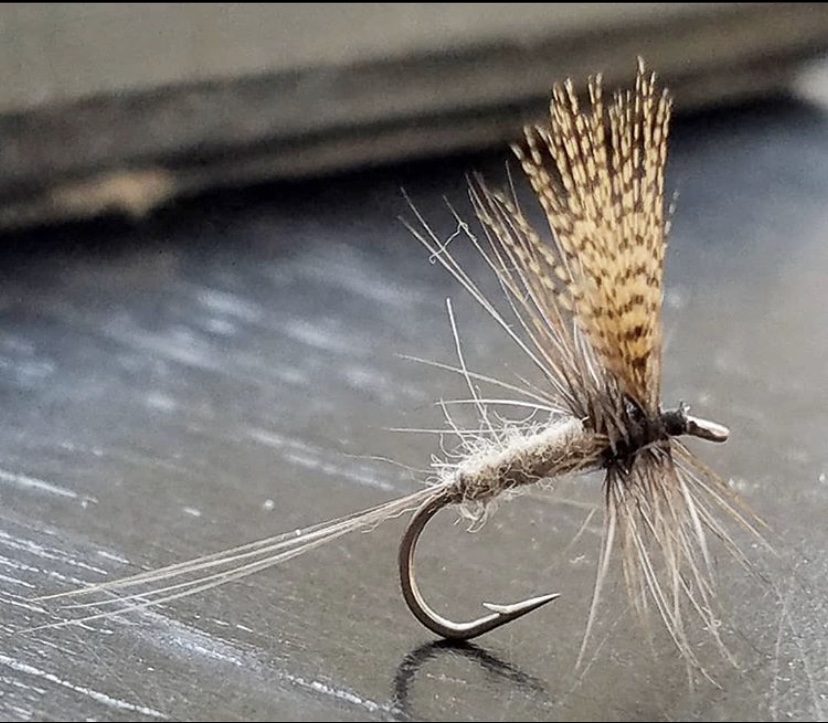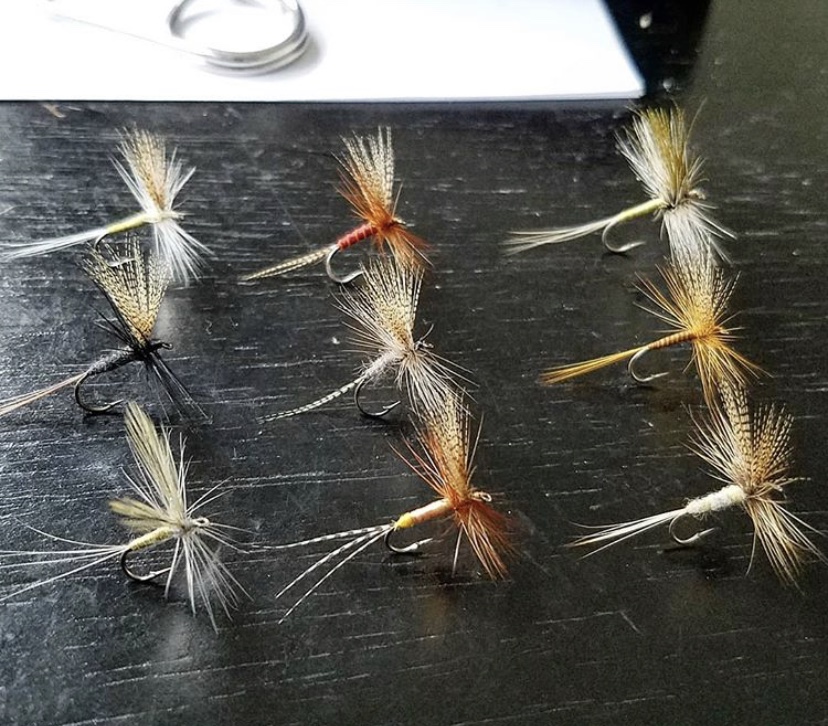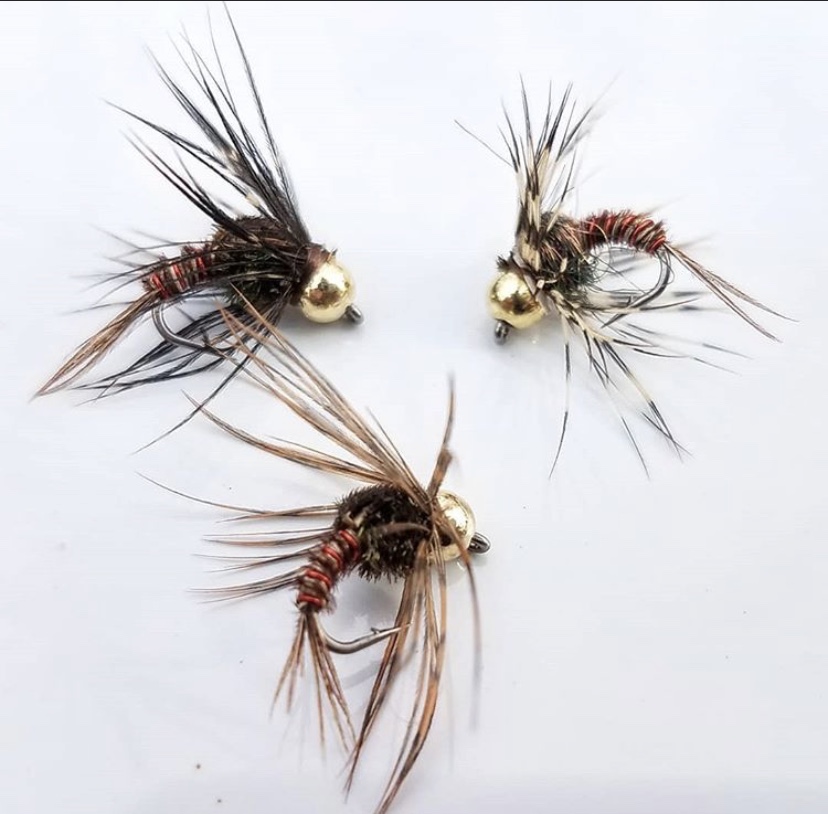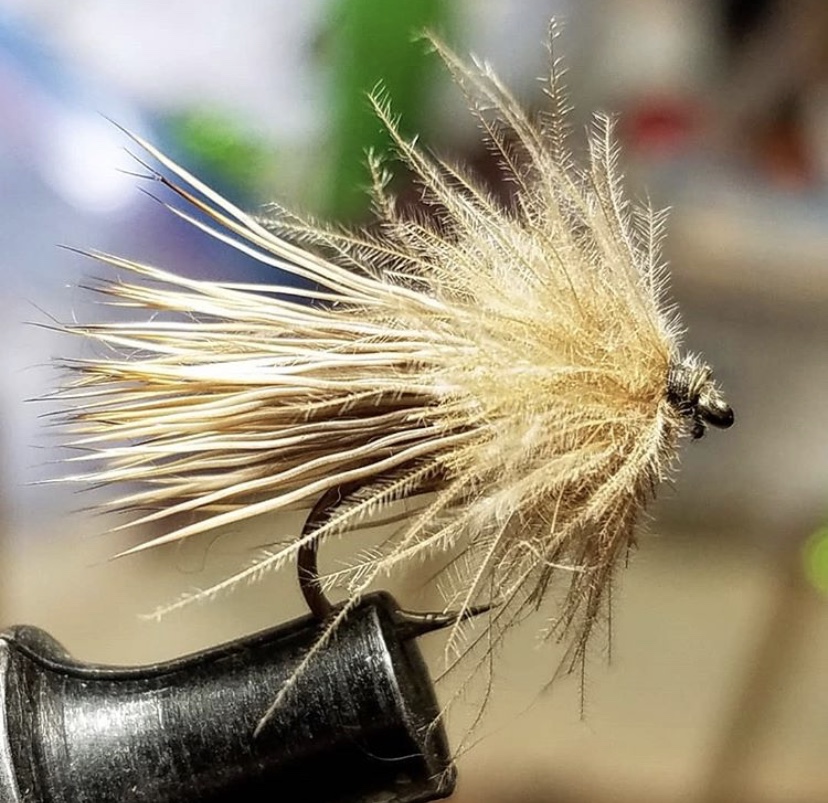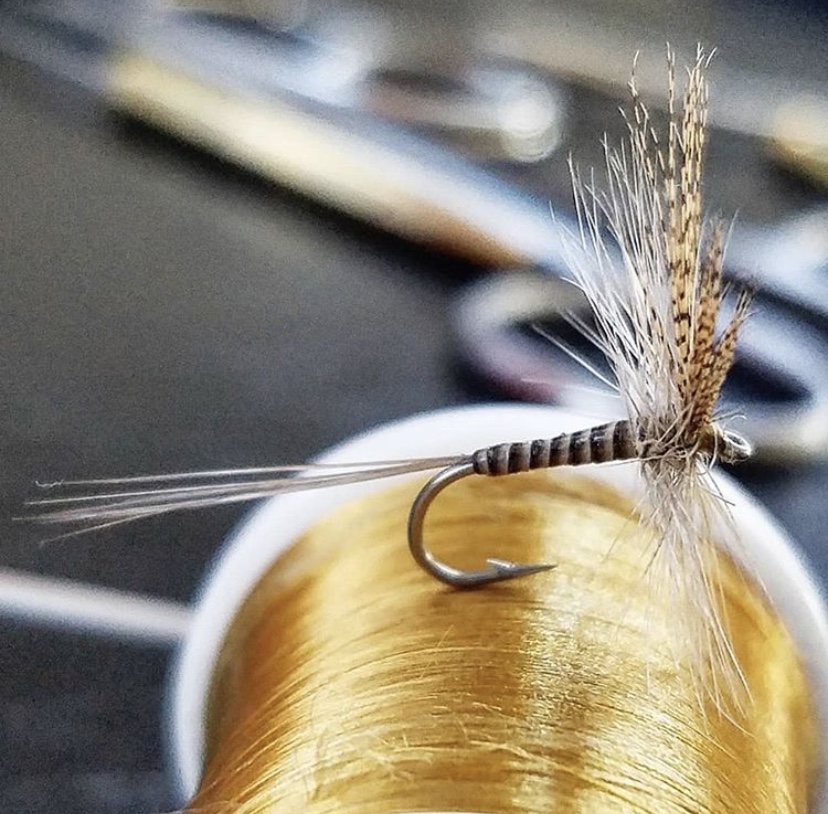Our newest feature is Matthew Beers, who hails from the foothills of New York’s Catskill mountains. Matthew is a natural storyteller, more than glad to share his origin story as a fly tyer.
“I would only be able to guess at the year I began tying my own flies,” he muses. “It seems like a lifetime ago. I started my journey in my early twenties by hand-carving and painting crank baits for sale to other fishermen I would meet. Around that same time I had noticed that one of my customers, Mr. James “Bucky” Stern, was always in his home office, splitting time between his work as an attorney and spinning around in his chair to his massive roll-top desk, tying flies.”
“The walls were covered with shadow boxes of trout flies tied by some very famous people I did not know the names or significance of…yet. We began having talks about fishing, tactics, and the basics of fly tying. This man would become my mentor, my friend, my Flyfishing Yoda. I had expressed my interest in learning how to cast a fly rod, but I told him I had no one to show me how. He was very clear in his response: “read a book.”
“I took that advice and eventually, after reading a book on beginner fly casting cover to cover a half dozen times, I purchased a very inexpensive Pflueger rod, reel, and line. I spent the next few months over the course of that winter getting home from work and practicing my cast in the backyard until darkness would overtake me. By spring I was ready, able to cast with relative confidence and land pretty much on target. I started with targeting largemouth bass, but I quickly found that most store-bought top-water bass bugs were constructed on a size-4 hook, and after many frustrating days of big largemouths being able to easily shake loose, I decided I could do better. I spent some time under Bucky’s tutelage tying my own bass bugs on size 1/0 to 4/0 hooks. This included spun-deer hair poppers, sneaky Petes, and cork hand-painted poppers. I eventually moved to chasing smallmouth, and with that the flies I tied got smaller. Eventually on a trip upstate I was fishing a small spring Creek and landed my first brook trout on a pretty shabbily tied dry fly. I was hooked, so to speak. I couldn’t wait to show Bucky a picture of that first brookie.”
“This is where my tying of trout flies really started with a simple statement. Bucky said to me, ‘Matthew, there are two types of tyer: those who tie a few flies just to go and catch a few fish–and that’s fine–or those who see it as the art form it is and tie every bug as if it is going to be on display. Which one do you want to be?’ This simple statement put me on a slightly different path from just throwing some material on a hook to maybe fool a fish. To this day 90% of the flies I tie are what I call ‘not-for-fishing flies.’ I tie them for display or reference purposes.”
“Buck started by recommending simple patterns to learn, the very first being a Lefty Kreh pattern called the Chartreuse Grub. On occasion he would give me an example of a pattern he tied, telling me to take it home and give him ‘half a dozen by next week.’ He was tough. I would bring my flies and he would not pull any punches. On more than one occasion he walked right over to the garbage, dumped my flies in it, and just turned around and said, ‘You can do better.’ This tough approach really worked, although I didn’t see it at the time. In short order I would tie and tie and tie until the flies I would bring to Buck were as perfect as I could possibly get them.”
“As my skills improved, Bucky became more and more open about who exactly he was, who he had been friends with and tied with. This was a man who had been close friends with and tied with Walt and Winnie Dette, Harry and Elsie Darbee, Ray Bergman, Ed Van Putt, and Lee Wulff, a man who had sat on the board of the DeBruce Flyfishing Club for forty years. He didn’t just know Catskill Flyfishing history; he was part of it. And I absolutely loved listening to all the stories.”
“At this point I was reading everything I could get my hands on: books on tying, fly fishing history, tactics–anything that had to do with the sport. The more I read, the more I understood. The more I understood, the deeper and deeper down the rabbit hole our talks would get. Normally there was one specific topic per visit: best pattern for specific stretches of Catskill water, how micro drag on a glass pool will easily put a fish down, theory on feeding cycle, entomology, fish migration, reading water, you name it.”
“I would never leave without an assignment, whether it be a particular fly pattern or tying technique, a style of cast (Buck loved the reach cast when fishing a dryfly), or a book to read. We never fished together, nor did I ever even see him cast. Only on a few occasions did he sit at his vise and directly show me how to tie something. Most of the time it was a thorough explanation then practice at home. This went on for well over a decade, with a steady increase in difficultly.”
“The last year’s were really the best. I had become as knowledgeable as I needed to be to really get into the grit of the sport. Our talks had become those of two old friends generations apart in years but in lock step on the sport. He paid me some fine complements on how far my tying had come. The last fly I brought him to look over was a design of my own, The Neversink Caddis. We sat at his kitchen table and after he examined it closely I’ll never forget what he said: ‘Wow that is some fly. You’re there, kid’.”
“Bucky passed away just a few years ago. I can honestly say I learned more from him than all the books combined. He really took the time to pass on a lot of his knowledge.”
And what is Matthew doing with that knowledge today?
“As of today, he says, “I tie most days of the week. I quite enjoy tying old patterns, particularly from Ray Bergman’s work. For me there just something about taking a picture off a plate print and bringing it to life.”
“I often think of my fly tying origin story separate from my learning to stalk trout, and that sure is a story in itself. It’s funny how the two go hand in hand yet are slightly separated. Learning to fish, you’re there in the water, matching a bug, making a cast, taking a fish, but with tying–if you’re like me–you’re home. Maybe at a desk or a table focused on that one thing in front of you. My point is although they are joined I bet if you took someone who looked at tying simply as an art, they could probably get great enjoyment in just tying beautiful flies without ever going near water and casting one to a fish.”
What are Matt’s favorites?
“Old school historical patterns by the greats of Flyfishing,” he answers, “or patterns of my own design.”
And what does he do with them?
“I have always refrained from selling my flies,” he says, “and much prefer to swap with people. I have swapped flies with people all over the world and love the variation in patterns from country to country. I also get much enjoyment in hearing my patterns are taking fish in other countries.
With all his experience, Matt certainly has wisdom to pass on to beginners. “Fly tying is really made up of about a dozen or so techniques,” he says. “Each pattern is a variation of a certain number of these techniques. Pick one pattern at a time, tie that pattern over and over until it’s perfect and you know it by heart, and ten move on to the next pattern, picking one with a different set of techniques. Repeat the process. Before you know it you will have mastered all the techniques and will be able to tie anything at will.”
What does Matthew like to cast for?
“I love stalking trout,” he says. “There was a time not that many years ago when I would fish seven days a week through the season, even if it was only for a half hour an evening after work. Unfortunately I do not have the time these days to get out as often.”
Matthew is eager to mention his gratitude for his sponsors. “I am a pro tyer for J Stockard FlyFishing (@jsflyfishing) and Sideling Hill Hackle (@sidelinghillhackle). I guess I would also be considered the in-house resident tyer for Thruway Sporting Goods in Walden, New York. I have taught beginner and advanced tying classes there, helped organize and put on tying events with some of the best tyers in the area to donate flies to organizations like Project Healing Waters. Although I have not done a class in a few years, I still tie some bugs for the owner who happens to also be my boss, friend, and a phenomenal fly-fisher in his own right.
“I am always working on either refining patterns of my own design or working on something new. Over the years I have developed several patterns I believe to be unique to me.”
Lastly, we were curious about Matthew’s gear.
“I typically fish a 9′ four-piece 5wt rod with Weight Forward floating line. I will on occasion use a double tapper floating line for dry-fly fishing to spooky fish. I do not fish an expensive set up by any means. There is one thing I have learned over the years when it comes to all of that, simply put in the words of a good friend: ‘It’s not the car, it’s the driver.’ No matter the brand or how expensive the gear is, it doesn’t make it a magic wand that magically pulls fish from the depths. It all comes down to who’s hand it’s in. If you are confident and know the ropes, you’ll do fine.”
